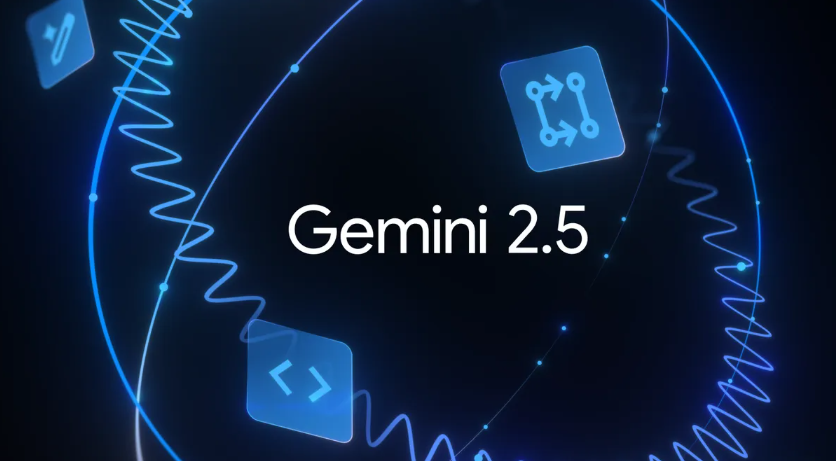Google Unveils Gemini 2.5 Flash-Lite: Redefining Efficiency and Accessibility in Large Language Models
Google launches faster, cheaper Gemini 2.5 LLM series
TECHNOLOGYLLMARTIFICIAL INTELLIGENCE
Eric Sanders
6/19/20253 min read


In the rapidly evolving landscape of artificial intelligence, speed, accessibility, and cost-effectiveness remain paramount. Google's recent launch of Gemini 2.5 Flash-Lite represents a significant stride toward making powerful language models both faster and more affordable for developers. This upgrade not only refreshes their previous offerings but also introduces exciting new capabilities that promise to reshape how AI applications are built and utilized.
A Leap Forward in AI Model Efficiency
Google’s introduction of Gemini 2.5 Flash-Lite addresses a critical challenge in AI development: balancing computational power with operational cost. Large Language Models (LLMs) have traditionally required substantial processing time and expensive infrastructure, limiting their accessibility. Gemini 2.5 Flash-Lite flips this narrative by prioritizing efficiency without compromising essential capabilities.
Key features of Gemini 2.5 Flash-Lite include:
Faster Prompt Processing: Developers experience quicker response times, enabling real-time interactions and more dynamic applications.
Multimodal Input Support: By accepting inputs beyond just text—such as images—this model enhances versatility and broadens potential use cases.
Cost Efficiency: Designed as a low-cost solution, Flash-Lite reduces barriers for startups and smaller developers aiming to integrate advanced AI.
This model replaces earlier iterations, offering both pricing and performance improvements that make it a compelling choice for AI creators.
The Promise and Impact of More Accessible AI
As someone fascinated by the democratization of technology, Gemini 2.5 Flash-Lite represents an important milestone. The high cost and complexity of harnessing top-tier LLMs have often meant that only large corporations or well-funded projects could fully realize their potential. With Google's newest release, the playing field levels considerably.
I recall instances where rapid prototyping in AI was thwarted due to sluggish model responses or budget constraints. The ability to process prompts more efficiently not only speeds development cycles but also enhances user experience in applications ranging from chatbots to creative tools.
Moreover, embracing multimodal inputs feels like a natural next step in AI evolution. Humans communicate through a rich blend of text, images, and sounds. By incorporating this complexity, Gemini 2.5 Flash-Lite invites developers to build more intuitive, engaging solutions.
What Can Developers and Businesses Learn from Gemini 2.5 Flash-Lite's Launch?
The debut of Gemini 2.5 Flash-Lite is not just a technical upgrade; it signals larger trends worth noting:
Prioritize Efficiency in AI Solutions: While the power of models is important, the ability to process inputs swiftly and cost-effectively determines real-world usability. Gemini 2.5 Flash-Lite exemplifies this philosophy.
Expand Modalities for Richer Interaction: Supporting multimodal inputs encourages innovation in use cases, from customer service bots that understand images to content generators capable of producing or interpreting visual data.
Consider Pricing Structures Seriously: Google's pricing adjustments highlight how cost models can enable or restrict access to AI. Developers should weigh these factors when choosing technology stacks.
By focusing on these dimensions, AI practitioners can better align their strategies with user expectations and market realities.
Pricing and Performance: A Game-Changer for AI Development
One standout aspect of Gemini 2.5 Flash-Lite’s release is the comprehensive overhaul of pricing. Google announced that this model offers substantial reductions compared to previous versions, an intentional move to spur wider adoption.
This shift not only benefits individual developers but creates opportunities for startups and small-to-medium enterprises competing in AI innovation. Lower operational costs mean more experimentation and a higher tolerance for trial and error — essential ingredients for breakthroughs.
Additionally, the performance improvements are material:
Reduced Latency: Faster prompt handling translates to smoother experiences in customer-facing applications.
Enhanced Model Responsiveness: Improving the model’s agility ensures more accurate and coherent outputs even under constrained resource conditions.
Together, these factors make Gemini 2.5 Flash-Lite a robust option where speed, cost, and capability intersect.
Bridging the Gap Between Cutting-Edge AI and Practical Use
Ultimately, Google’s Gemini 2.5 Flash-Lite exemplifies a broader trend: moving from AI as a luxury or niche tool toward mainstream, practical deployment.
When AI models become more responsive, affordable, and flexible, the possibilities multiply:
Small businesses can integrate smart assistants without prohibitive budgets.
Developers can embed multimodal intelligence into apps ranging from education to healthcare.
Innovators can push boundaries creatively, knowing their infrastructure can keep pace.
Reflecting on these implications, it’s clear that the future of AI will be shaped not just by how smart models are, but by how accessible and adaptable they become.
How Will You Harness the New Power of Gemini 2.5 Flash-Lite?
Google describes Gemini 2.5 Flash-Lite as an efficient, low-cost LLM that “processes prompts faster” and “supports multimodal inputs" a combination that holds potential across industries and applications.
This invites a critical question for AI developers, entrepreneurs, and enthusiasts alike:
How will you leverage this new generation of models to create more responsive, inclusive, and innovative AI-powered experiences?
Whether your focus is transforming customer service, enhancing content creation, or exploring new interactive formats, the advancements encapsulated in Gemini 2.5 Flash-Lite mark a turning point that’s hard to ignore.
As AI continues to evolve, the next breakthrough may well depend on embracing not just what these models can do, but how efficiently and accessibly they can do it. Are you ready to explore what Gemini 2.5 Flash-Lite can unlock for your projects?
Efficiency
Transform your workflows and reclaim your time.
Contact Us
Need A Custom Solutions? Lets connect!
eric.sanders@thedigiadvantagepro.com
772-228-1085
© 2025. All rights reserved.
